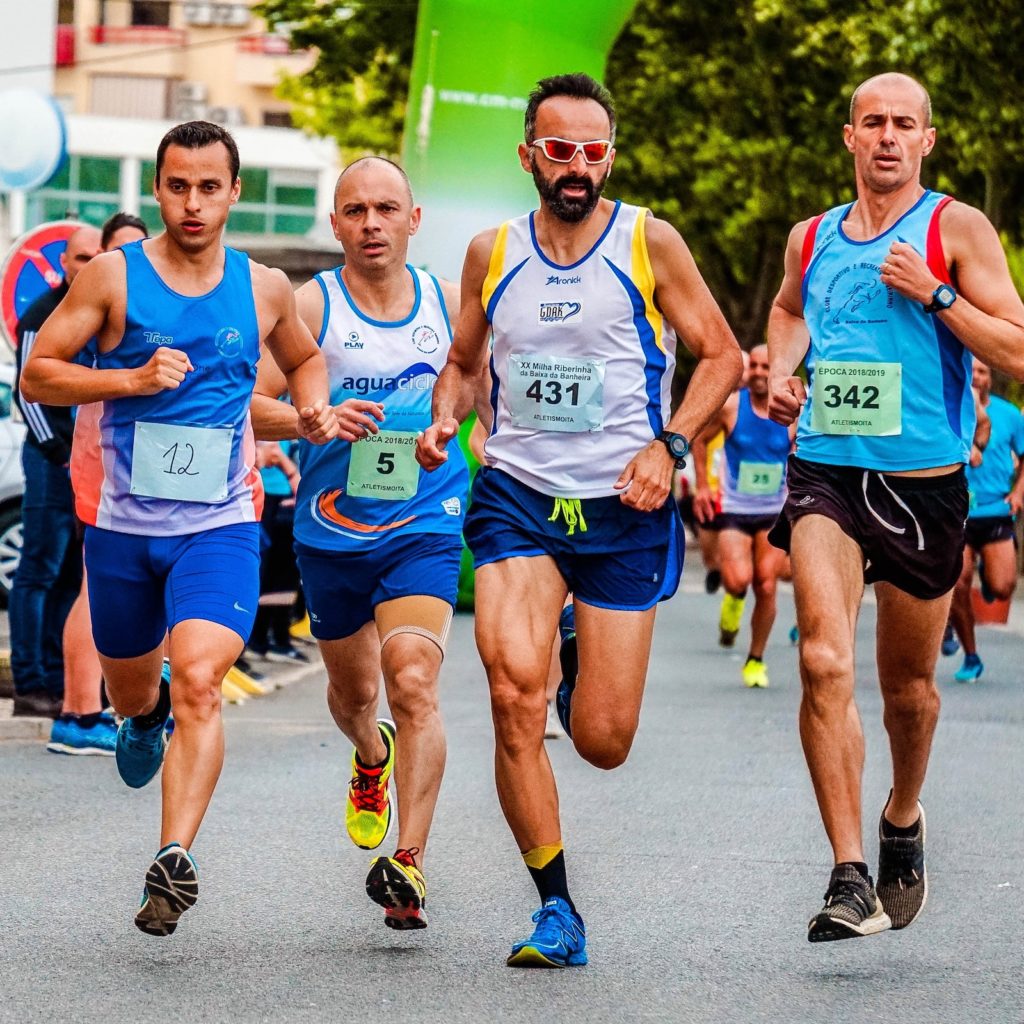Movement Retraining
Tune into your movements
and fix the bad habits holding you back.
Re-gain mobility, work around an injury,
or blast past a sports performance plateau with Movement Retraining.
Don’t accept decreasing mobility.
Don’t accept loss of activity due to degenerative issues, injury or pain. Movement retraining can help you learn to work around your body’s challenges and distribute your movement more equally and efficiently. This means you can keep the active lifestyle you love; playing with grandchildren, gardening, and even walking up stairs despite aging or physical challenges. With movement retraining, a Synergy physical therapist can help correct and restore your movement patterns and improve your ability to do the things you love.


Say “Goodbye” to Your Performance Plateau.
Movement retraining can identify biomechanical inefficiencies to improve performance in usual daily activities, recreational and sport activities. Whether you’ve got challenges with routine movements like squatting, walking or climbing stairs, or are having trouble improving your golf swing, movement retraining helps identify and ease the movement imperfections that are holding back your performance. Movement retraining focuses on eliminating old habits and tuning up your body to identify and address subconscious patterns.

“I have been coming to Synergy for about 7 years and have tried other places, but no one was like Synergy and the people here. One time I visited a P.T at another clinic and after a whole session with hot packs she came in for 2 minutes, ran her thumb down my back and said, come back next week… I didn’t go back.
When I first started at Synergy, I was heading towards using a wheelchair and could barely walk. Now I walk on my own. I have had many surgeries due to cancer. I have had one kidney removed and part of my lung, and my thyroid, and have lots of scar tissue that gives me really terrible pain sometimes.
I also have bad memories from the war and sometimes have a really hard time sleeping. Shauna has started using the FSM machine and I am calmer and so much better. Nora works on my scars and helps me to move better. I used to be a bowler and that is my goal, I want to bowl again with my friends. I couldn’t function without Synergy and tell all my Doctors and everyone I meet. I believe in Synergy over all the other rehab centers.”
Evelyn
Let’s Talk
Book a discovery call with a physical therapist today. We’ll discuss your areas of concern, past injuries, and movement goals. Then we’ll take an honest look at your treatment options: no referral needed and no strings attached.
FAQs
What is Movement Retraining?
Faulty movement patterns commonly contribute to injuries. Poor body mechanics can lead to injury, pain and damage over time. Movement retraining is learning how to perform specific patterns in a progressive manner to restore full and pain-free function. Movement retraining is essential to address the underlying functional issues and clear up problems that arise after injury. Even if faulty movement patterns did not exist before a person’s injury, they often develop afterward as an adaptation to or compensation in response to the injury.
The philosophy behind movement therapy is to educate and empower patients to work beyond their physical limitations to achieve their goals. Movement therapy has varying approaches; some focus on aligning with gravity, some on specific movements, and others on spontaneous movements. Although manual treatments help remove pain and restore range of motion, they do not by themselves usually restore good posture and movement. Your central nervous system has learned dysfunctional patterns and will keep doing them until it is retrained. Movement re-education aims to restore optimal movement—specifically, YOUR optimal movement.
Movement retraining focuses on motor control, which we can think about as a habit. Some people refer to it as “muscle memory”. For example, If you’re a basketball player, shooting free throws is an automatic movement you don’t think much about after a history of thousands and thousands of practice shots. The same applies to how we squat, jump, walk, land, and run. Through habit, you’ve hardwired your body to perform each movement a certain way. If you’ve developed unhealthy motor habits, you may at best be limiting your athletic potential or at worst, causing stresses that may lead to injury.
Who Should Seek Movement Retraining?
Movement retraining isn’t just for those who have suffered an injury. It’s an excellent sports medicine solution to help you correct biomechanical inefficiencies to speed up your run, prevent pain on a marathon, improve your golf spring swing, and make your throwing arm more powerful. It’s also highly effective for those with decreasing mobility who want to maintain their usual activities and lifestyle. For example, if you have degenerative changes in your lower back, neck, or shoulder, as many of us do, you may have developed pain and weakness that has led you to discontinue the things you used to do and to use altered movement patterns. You can learn to control movement in these sensitive areas and use appropriate muscles to distribute your action through other joints. The result is less pain and greater daily mobility. Finally, those who have suffered from an injury often develop compensatory or faulty movement patterns that might even have contributed to the injury and around any new patterns created from “favoring” the injured area.
Benefits of Movement Retraining
You will enter into a new relationship with your body. Learning to listen and correctly interpret the sensations you are receiving means that you can genuinely take care of your body. Your therapist will help you safely challenge your body in constructive ways to get stronger. You will learn to avoid the old patterns of posture and movement that caused pain and damage and replace them with new “muscle memory” patterns that are more comfortable, safer and reduce stress on your body. If joint or tissue degeneration has occurred, as it has with most of us, you can learn to move and stabilize appropriately to avoid irritating those areas.
Moshe Feldenkrais, founder of the Feldenkrais Method, a system of physical exercise that aims to improve human functioning by increasing self-awareness through movement, has said that “When you know what you are doing, you can do what you want.” This is the main focus of movement retraining. You will be able to return to many of the activities which you weren’t able to do or used to cause pain. At the same time, because you now know more about your body—the imbalances it tends towards, the remaining limitations you have—and how to care for it, you will have the freedom to find new pursuits to replace activities that don’t truly help your body, and that tend to break it down.
Other Benefits
- Decrease strain joints,nerves, cartilage
- Ease tension on damaged structures
- Exert less effort during movement
- Improve body and postural awareness
- Pain management
- Decrease risk of re-injury
- Can improve performance (if an incorrect movement pattern is the cause of poor technique)
What to Expect at a Movement Retraining Session at Synergy Physical Therapy in Spokane Valley
A Synergy physical therapist will perform an assessment and carefully observe and deconstruct your habitual movements at your initial appointment. These can be either daily movement patterns that are causing you pain, like walking up stairs, or movement patterns associated with your sport, like your golf swing, throwing arm, or running motions. Your therapist will assess and observe your movement patterns, strength, mobility, and flexibility to determine what areas need strengthening or alteration. The therapist will also help you locate biomechanical inefficiencies and retrain those movements to increase strength, improve flexibility, maximize your performance potential, and help minimize the risk of injury in the future. We put all the pieces together to create dynamic movements directed towards your goals or activities, whether that’s being able to clean your house, tend your garden, or run a marathon.
Expect to be fully engaged; these are not mindless exercises. You are learning to listen to your body and feel the movement—which muscles are working, which are letting go, which joints are moving, and how much, etc. Expect to practice movement exercises for as much as 15 to 30 minutes daily, and be challenged to apply correct movement patterns to all your daily activities (this is the end goal!). You will be breaking bad habits, learning good movement patterns, and applying them to your sport or daily activities. This is not easy, but it pays dividends for the rest of your life!
Movement Retraining Benefits last a Lifetime.
Commit to re-learning the movement patterns that help you care for your body.

You may have thought you needed to accept a sports plateau or a decrease in mobility because that’s “just how your body is.” But the great news is that you don’t need to! Movement retraining takes attention and commitment. Still, through movement training sessions with a Synergy Physical Therapist, you can overcome habits that are holding you back or causing you to give up doing activities you love. There is a light at the end of the tunnel. Let movement retraining help you get there.
– Shauna Burchett, Owner